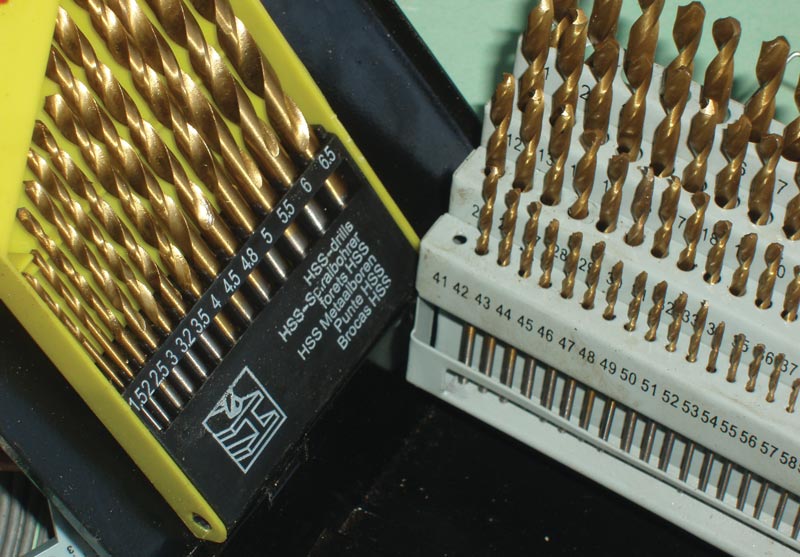
Calipers give accurate dimensions of different gauges of steel and copper wire. Wire gauge numbers were applied to sheet steel (top right) and plate steel (middle left), while the aluminum sheet (top left) uses a different system. Increased sizes of numbered drill bits don’t always follow arithmetic progress, while what you see is what you get with metric drill bits (in yellow holder). The feeler gauges, fanned out at right, offer a quick conversion from U.S. to metric dimensions. Photos by Scott R. Nesbitt
Good technicians rely on accurate measurement, but accuracy is tough to achieve when dealing with “gauge” dimensions for wire, sheet metal and drill bits.
In the United States, copper 20-gauge electrical wire is thinner, but not half as thin, as 10-gauge. In steel plates, a 3 gauge is one-fourth-inch thick, but 11 gauge is one-eighth-inch thick.
Gauge systems assign higher numbers to thinner materials. They don’t add or subtract like the numbers you learned in school.
A technician’s best bet is an accurate micrometer or caliper and actual measurement — in metric units — to understand materials and get in sync with the rest of the world. Without your own measurements, can you really understand the merits of one company’s 10-gauge mower deck compared with a competing 12-gauge?
Service manual specifications can be misleading, because there are multiple gauge/dimension systems. Which did the manufacturer use? It can vary widely, depending on where the machine’s components and assemblers are located and when the specs were published.
“Gauge” originally described the size of hole (or gauge) that softened hot metal was pushed through to form a round wire. Pushing softened metal through smaller and smaller gauges produced thinner wire — more gauges, thinner product. Different producers used different-sized holes and created their own gauge-to-dimension systems. This chaos started in the 1300s.
When mass production of steel became practical in the 1850s, wire-gauge dimensions were often applied to the finished sheet metal, and again proprietary gauge/dimension systems were used. It took two world wars to foster international standards, which are almost all based on reporting the metric dimension of the product. But traditions and oddness persist.
For example, the law named 15 U.S. Code § 206 defines the gauge numbers used for actual dimensions of steel and iron sheets. But that system isn’t carried over to sheets of aluminum, copper, brass and other metals. Even stainless steel uses a different gauge/dimension system.
Even the metric-based international systems are a bit wacky. Standards for electrical wires specify not the diameter, but the cross-sectional area of the wire. To learn the outside diameter, you work through the equation for the area of a circle:
Area = π × r2 ,
where the area equals π (which is 3.1416) times r2, which is the radius of the circle squared.
Gauge numbers for drill bits are even more complex and include lettered gauges. Holes drilled in wood, metal and plastic serve different purposes, including allowing passage of liquids in spray equipment and providing a baseline hole for inserting a tap to create screw threads. Something like the modern twist drill or auger has been around for about 5,000 years — plenty of time to develop a bewildering array of gauges/dimension systems in different industries and countries.

Metric-labeled drill bits, at left, are becoming the world standard, displacing the Anglo-American numbered drill bits often referenced in technical manuals.
The history is murky, but it’s likely that early in the Industrial Age, it was best to instruct a factory worker to use a No. 19 drill bit instead of specifying 4.22 millimeters or 0.1660 inch or 83/500 inch.
Here are two helpful tables that clarify many common wire and sheet gauge systems: the official U.S. dimensions for iron and steel sheet gauges, and the millimeter equivalents of American and British gauges that are often referenced in English-language publications.
Scott R. Nesbitt is a freelance writer and former GCSAA staff member. He lives in Cleveland, Ga.